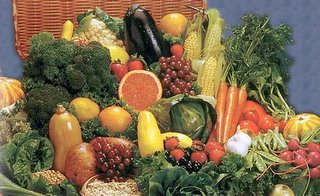What should Myelomics eat?
 Here is the listing of vegetables from the report entitled "Lipophilic and Hydrophilic Antioxidant Capacities of Common Foods in the United States" from the Journal of Agricultural Food and Chemistry (2004), based on Total Antioxidant Capacity per serving:
Here is the listing of vegetables from the report entitled "Lipophilic and Hydrophilic Antioxidant Capacities of Common Foods in the United States" from the Journal of Agricultural Food and Chemistry (2004), based on Total Antioxidant Capacity per serving:- Small red beans 13727 (dry)
- Red kidney beans 13259 (dry)
- Pinto beans 11864 (dry)
- Artichoke 7904 (cooked)
- Russet potatoes 4882 (raw), 4649 (cooked)
- Black beans 4181 (dry)
- Raab broccoli 2621 (raw), 1322 (cooked)
- Navy beans 2573 (dry)
- Red cabbage 2359 (cooked), 788 (raw)
- Red potato 2339 (raw), 2294 (cooked)
Others include
Blackeye peas 2258 (dry), White potatoes 2257 (raw) 1870 (cooked), Asparagus 2021 (raw) 1480 (cooked), Yellow pepper 1905 (raw), Beets 1886 (raw), Orange sweet pepper 1830 (raw), Yellow onions 1281 (cooked) 823 (raw), Red leaf lettuce 1213 (raw), Sweet potatoes 1195 (cooked) 1173 (raw), Radishes 1107, Red sweet pepper 1072 (raw) 576 (cooked), Spinach 1056 (raw), Eggplant 1039 (raw), Red onion 917 (raw), Broccoli 982 (cooked) 700 (raw), Carrots 741 (raw) 171 (cooked), Green pepper 664 (raw) 418 (cooked), Green leaf lettuce 620 (raw), Corn 561 (raw) 434 (canned) 428 (frozen), Pumpkin 560 (raw), Tomatoes 552 (cooked) 415 (raw), Sweet onion 492 (raw), Green peas 480 (frozen) 326 (canned), Cabbage 476 (raw), Butterhead lettuce 427 (raw), Romaine lettuce 396 (raw), Celery 344 (raw), Cauliflower 324 (raw), Lima beans 301 (canned), Baby carrots 262 (raw), Snap beans 197 (canned) 147 (raw) Iceberg lettuce 144 (raw), Cucumber 74 (unpeeled) 60 (peeled)
The antioxidant capacity is affected by cooking. For example, the russet potato has a TAC/serving of 4882 (raw) and 4649 (cooked), whereas red cabbage has a TAC/serving of 788 (raw) and 2359 (cooked).
Just because a vegetable has a low antioxidant rating doesn't mean it isn't packed with a wide range of beneficial phytonutrients (aka phytochemicals). For example:
- onions and beans contain Quercetin (a flavonoid)
- carrots, peppers and tomatoes contain Carotenoids
- tomatoes contain Lycopene
- carrots contain Beta-carotene and Lutein
- cruciferous vegetables contain sulforaphane and dithiolthiones
http://www.phytopia.com/cookbook/glossary3.htm
and the USDA Food and Nutrition information center
http://www.nal.usda.gov/fnic/etext/000102.html


0 Comments:
Post a Comment
<< Home